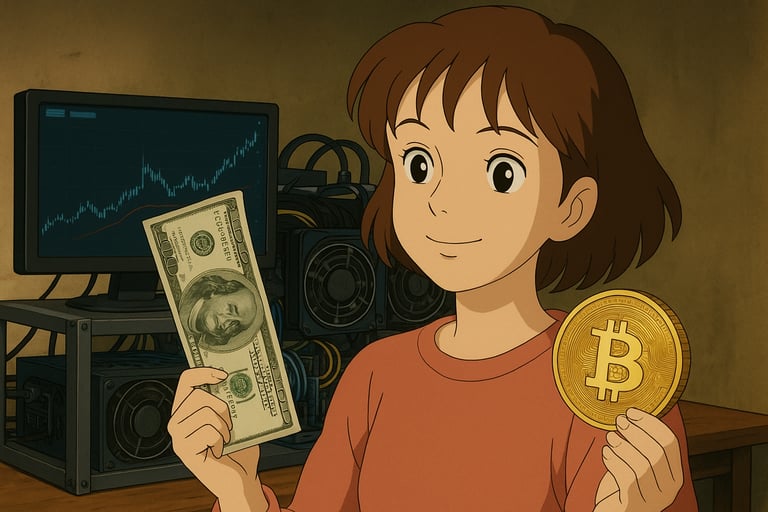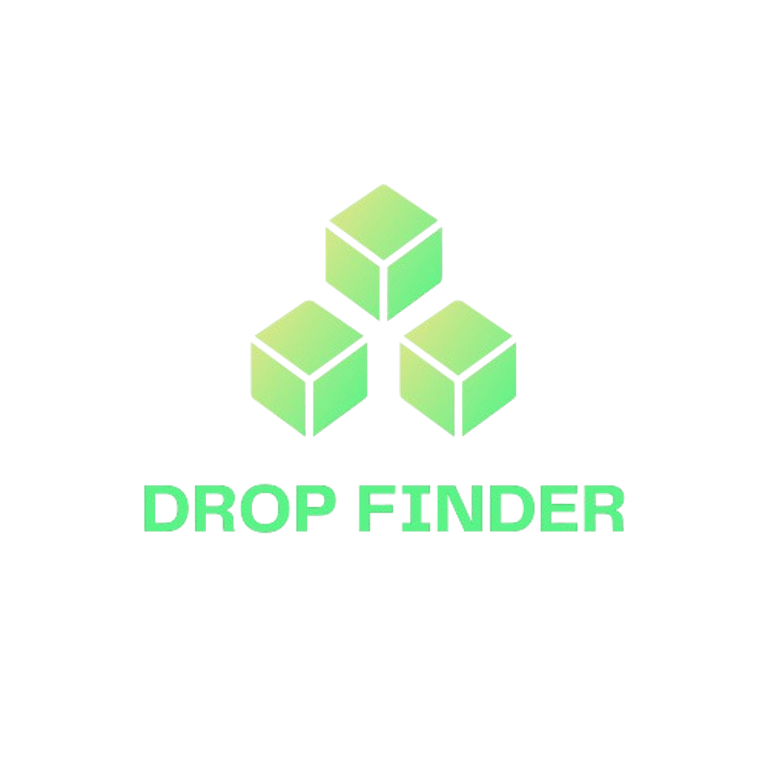How to Create Your Own NFT: A Complete Guide
Learn how to create your own NFT from scratch — from concept and artwork to blockchain minting, smart contracts, and marketing. This complete guide explains every step in simple terms, using DropFinder as a reference for showcasing and tracking digital assets effectively.
LATEST AIRDROPICOCRYPTO NEWS
10/4/20255 min read
Introduction: The Rise of NFTs
Over the last few years, the world of digital art and blockchain has merged to form one of the most powerful movements in tech — Non-Fungible Tokens (NFTs). These digital collectibles have changed how artists, gamers, and creators monetize their work.
Unlike cryptocurrencies such as Bitcoin or Ethereum, each NFT is unique, holding its own value and metadata. It can represent anything — from digital art, music, in-game items, or even a tweet.
Creating your own NFT isn’t as complicated as it sounds. Platforms like DropFinder make it easier for creators to display, track, and promote their NFTs to a larger audience.
In this guide, we’ll go step by step into how to create, mint, and sell your own NFT, while also understanding how platforms like DropFinder can help you gain visibility.
1. Understanding What NFTs Are
Before you jump into creating one, you need to understand the basics.
NFT stands for Non-Fungible Token — meaning it’s not interchangeable like other coins. A Bitcoin is equal to another Bitcoin, but an NFT is one-of-a-kind.
Each NFT lives on a blockchain (usually Ethereum or Binance Smart Chain), and it contains:
Ownership data (who created it and who owns it now)
Metadata (artwork, description, and properties)
A link to digital content (like image, audio, or video)
NFTs use smart contracts to confirm ownership and transfer rights automatically — without middlemen.
2. Why You Should Create Your Own NFT
Creating an NFT can be powerful for many reasons:
Ownership: Your digital art or content can have verifiable ownership.
Royalties: You can set a royalty fee to earn money every time it’s resold.
Global Exposure: NFTs are traded globally, giving you worldwide reach.
Branding: It builds a strong personal or business brand.
DropFinder Integration: By using DropFinder, you can showcase your NFT project in one place with details, artwork, and mint information — increasing visibility among NFT hunters.
3. Choosing the Blockchain for Your NFT
Several blockchains support NFTs. Your choice will depend on transaction fees, community, and compatibility with marketplaces.
a. Ethereum
Most popular and widely supported.
Expensive gas fees.
Compatible with OpenSea and Rarible.
b. Binance Smart Chain (BNB Chain)
Lower gas fees.
Fast transactions.
Compatible with platforms like BakerySwap and DropFinder NFT discovery.
c. Polygon (MATIC)
Low fees and environment-friendly.
Popular for gaming NFTs.
d. Solana
Super-fast and cheap.
Popular for large-scale minting.
If you are new, BNB Chain is the most cost-effective choice for creating and minting your first NFT.
4. What You Need Before Creating an NFT
Here’s what you need to prepare before minting:
Digital File — Your artwork, image, video, or music.
Crypto Wallet — Such as MetaMask or Trust Wallet.
BNB or ETH — To pay for minting fees.
Concept and Utility — Define what your NFT represents.
NFT Marketplace — A platform to mint and sell it.
Promotion Strategy — Use DropFinder or similar NFT listing platforms to showcase it.
5. Designing Your NFT Artwork
The artistic part of the NFT can be:
Digital art (2D or 3D)
Photography
Animated GIFs or short videos
Music or sound
Virtual real estate
Collectible characters
When designing your NFT:
Use high-resolution images.
Be creative with concepts and rarity.
Keep copyright and originality in mind.
If you create multiple NFTs, define rarity levels (e.g., Common, Rare, Legendary).
DropFinder allows NFT creators to display collections in a structured format, showing metadata and rarity levels to potential buyers.
6. Setting Up a Crypto Wallet
A wallet is your gateway to blockchain interaction. It stores your NFTs and crypto safely.
Recommended Wallets:
MetaMask: Browser extension and mobile wallet.
Trust Wallet: Mobile-friendly and supports multiple chains.
Binance Wallet: Directly linked to BNB Chain.
Setup Process:
Download MetaMask or Trust Wallet.
Create a new wallet and back up your seed phrase.
Switch network to BNB Smart Chain.
Add funds (BNB) for gas fees.
Now your wallet is ready for minting.
7. Selecting an NFT Marketplace
Marketplaces let you mint (create) and list your NFTs for sale.
Popular Marketplaces:
OpenSea (Ethereum, Polygon)
BakerySwap (BNB Chain)
Rarible
LooksRare
Magic Eden (Solana)
DropFinder (for NFT discovery & airdrop promotion)
While DropFinder is not a minting site, it can be used to list your NFT drops, showcase artwork, and attract users looking for new NFT opportunities.
8. Minting Your NFT
Minting is the process of converting your digital file into a blockchain asset.
Here’s the general step-by-step:
Connect Wallet: Go to your chosen marketplace and connect your wallet.
Create Collection: Give your collection a name, logo, and description.
Upload Your File: Choose the digital file to mint.
Add Details: Include title, description, properties, and unlockable content (optional).
Set Supply: Choose if your NFT is one of one (1/1) or part of a series.
Set Royalty Percentage: Decide how much royalty you’ll earn on resale (e.g., 5–10%).
Pay Gas Fee: Confirm and pay minting fees using your wallet.
Complete Minting: Once confirmed, your NFT is live on the blockchain.
After minting, you can list it for sale or promote it via DropFinder.
9. Using DropFinder for NFT Visibility
DropFinder helps creators showcase new NFT drops, crypto projects, and upcoming airdrops in one hub.
If you’ve minted your NFT, you can:
Submit your NFT collection on DropFinder.
Add images, descriptions, and project details.
Link to your minting page or marketplace listing.
Gain organic exposure among NFT hunters.
This helps creators gain early traction, build hype, and attract potential investors or collectors.
10. Setting the Right Price
Pricing is important to attract buyers while maintaining perceived value.
Tips for Pricing:
Check prices of similar NFTs in your niche.
Set low initial prices for your first project to attract buyers.
Use auction-style listings for unique 1/1 artwork.
Offer bundle discounts for multiple NFTs.
Factor in gas and royalty fees.
On platforms like DropFinder, collectors can discover trending NFTs, so a well-priced listing can gain traction quickly.
11. Promoting Your NFT Project
Creating an NFT is just the start — marketing is where success happens.
Promotion Strategies:
Social Media: Promote on Twitter (X), Instagram, and Reddit NFT communities.
Discord Groups: Join NFT servers to connect with collectors.
Airdrops: Offer limited edition NFTs to early supporters.
Collabs: Partner with other NFT artists or Web3 projects.
DropFinder: Submit your NFT drop to be featured among trending digital assets.
Storytelling: Create an origin story for your art. People invest in meaning.
12. Royalties and Smart Contracts
NFTs use smart contracts to handle automatic transactions and royalties.
When you mint, you can set a royalty rate — usually between 2% to 10%.
This means every time your NFT is resold, you automatically earn that percentage.
Smart contracts make this possible by executing these rules without intermediaries.
13. Legal and Copyright Considerations
Many creators forget the legal side — but it’s vital.
You must own the rights to the artwork or media you mint.
Avoid using copyrighted or trademarked material.
Clearly define commercial use terms if buyers can use your art for profit.
Include disclaimers or licenses if necessary.
This transparency builds trust and protects your brand.
14. Building a Community Around Your NFTs
NFT success depends on the community supporting it.
Ways to build one:
Create a Discord server for fans.
Share updates, art concepts, and sneak peeks.
Host giveaways and interactive events.
Keep communication transparent and consistent.
DropFinder helps amplify this by connecting communities looking for early NFT opportunities.
15. Future of NFTs
NFTs are moving beyond digital art:
Gaming NFTs: Skins, weapons, and collectibles.
Metaverse Assets: Land and avatars.
Ticketing NFTs: For concerts and events.
Digital Identity: Credentials and certificates.
AI NFTs: Smart generative art.
By staying updated, you can position yourself early in these new waves of innovation.
16. Common Mistakes to Avoid
Ignoring copyright rules.
Overpricing new NFTs.
Not building a marketing plan.
Forgetting to back up wallet seed phrases.
Minting on high-fee blockchains without need.
Not verifying your listing on NFT directories like DropFinder.
Learning from others’ mistakes saves both money and reputation.
17. How DropFinder Can Elevate Your NFT Launch
DropFinder is more than just an airdrop site — it’s a discovery platform.
You can use it to:
Announce your NFT drops.
Gain exposure before minting.
Add your project to a list of trending digital assets.
Reach users who actively track blockchain-based opportunities.
It connects NFT creators with potential collectors, helping you get discovered in the competitive world of Web3.
18. Conclusion: Your NFT Journey Starts Now
Creating your own NFT is an exciting step into the future of digital ownership. You don’t need to be a blockchain developer — all it takes is creativity, the right tools, and smart marketing.
Start with your idea, mint it on a cost-effective blockchain like BNB Chain, and use platforms like DropFinder to promote your NFT and get recognized by a global audience.
Remember — NFTs are more than art; they’re a statement of innovation and independence. The earlier you start, the more experienced you’ll be when the next wave of digital ownership arrives.
Final Thoughts
Your NFT could be the next big trend. From digital artwork to metaverse creations, blockchain ownership opens endless opportunities. Use DropFinder as your visibility hub — where creators meet collectors, and every project gets a fair chance to shine.




